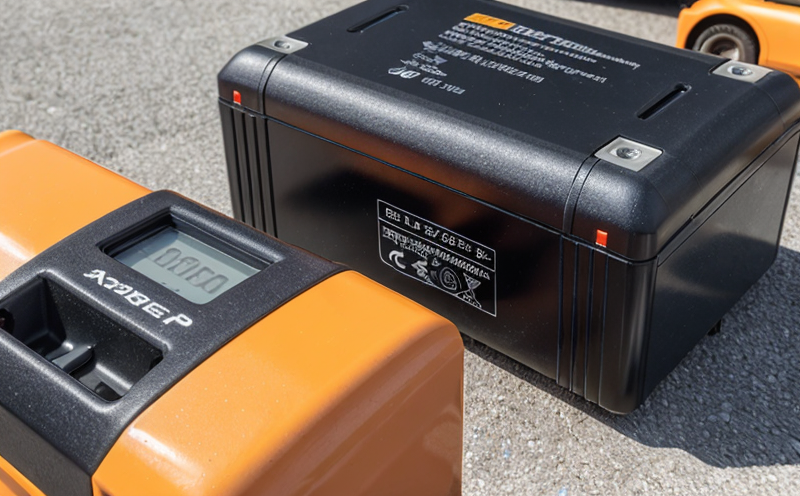Assessing battery design features to meet IEC 62133 safety requirements
Ensuring Battery Safety Assessing Design Features to Meet IEC 62133 Requirements
As the demand for portable electronic devices continues to rise, the need for safe and reliable battery designs has become increasingly important. Batteries are a crucial component of many products, from smartphones and laptops to electric vehicles and medical equipment. However, if not designed or manufactured correctly, batteries can pose serious safety risks.
The International Electrotechnical Commission (IEC) publishes standards for various aspects of electrical engineering, including battery safety. IEC 62133 is one such standard that outlines the requirements for batteries to ensure they meet stringent safety criteria. To guarantee compliance with this standard and mitigate potential risks, businesses can leverage Eurolabs laboratory service Assessing Battery Design Features to Meet IEC 62133 Safety Requirements.
Why is IEC 62133 Important?
IEC 62133 is a critical standard for battery manufacturers, as it provides a framework for assessing the safety of batteries. The standard covers various aspects, including
Thermal runaway and fire risk Ensures that batteries can withstand high temperatures without igniting.
Electrical shock and leakage Verifies that batteries are designed to prevent electrical shocks and minimize liquid or gas emissions.
Mechanical hazards Evaluates the risk of mechanical failure, which can lead to injuries or property damage.
Non-compliance with IEC 62133 can result in costly recalls, reputational damage, and even regulatory penalties. By partnering with Eurolab, businesses can ensure their battery designs meet these rigorous safety standards, safeguarding both consumers and their brand.
Benefits of Using Eurolabs Laboratory Service
Eurolabs laboratory service offers a comprehensive assessment of battery design features to meet IEC 62133 requirements. Here are the key benefits
Compliance with regulatory requirements Our team ensures that your batteries meet the stringent safety criteria outlined in IEC
Reduced risk of recalls and reputational damage By demonstrating compliance, you minimize the risk of costly product recalls and protect your brand reputation.
Increased confidence in battery performance Our testing services help identify potential design flaws or weaknesses, enabling you to optimize your battery designs for improved safety and reliability.
Competitive advantage Companies that prioritize safety and regulatory compliance often enjoy a competitive edge in the market.
QA Frequently Asked Questions
What is IEC 62133, and why is it essential for battery manufacturers?
The International Electrotechnical Commission (IEC) publishes standards for various aspects of electrical engineering, including battery safety. IEC 62133 outlines the requirements for batteries to ensure they meet stringent safety criteria.
What are the key benefits of using Eurolabs laboratory service?
Compliance with regulatory requirements, reduced risk of recalls and reputational damage, increased confidence in battery performance, and a competitive advantage.
How does Eurolabs laboratory service ensure compliance with IEC 62133?
Our team conducts a comprehensive assessment of battery design features, evaluating thermal runaway and fire risk, electrical shock and leakage, and mechanical hazards.
Can Eurolab help me optimize my battery designs for improved safety and reliability?
Yes, our testing services identify potential design flaws or weaknesses, enabling you to optimize your battery designs for enhanced performance and reduced risks.
Conclusion
Ensuring battery safety is a critical aspect of product development, particularly in industries where portable electronics are used. By leveraging Eurolabs laboratory service, businesses can guarantee compliance with IEC 62133 requirements, safeguarding consumers and their brand reputation. Our team of experts conducts comprehensive assessments to identify potential design flaws or weaknesses, enabling companies to optimize their battery designs for improved safety and reliability.
Dont compromise on safety partner with Eurolab to ensure your batteries meet the stringent standards outlined in IEC Together, we can create safer products that meet regulatory requirements while maintaining a competitive edge in the market.
-
Testing battery safety under international IEC 62133 safety standards
-
Verifying battery protection against electrical, mechanical, and environmental hazards
-
Simulating short circuit, overcharge, and thermal abuse conditions for compliance
-
Assessing battery performance under various stress tests for IEC 62133
-
Measuring the risk of fire, explosion, or chemical leakage during compliance testing
-
Testing for compliance with IEC 62133 for consumer electronics batteries
-
Evaluating the robustness of battery cells and packs against physical damage
-
Ensuring safety compliance for batteries used in medical devices and wearables
-
IEC 62133 compliance testing for batteries used in electric vehicles
-
Determining battery safety during overcharge, deep discharge, and short-circuit scenarios
-
Simulating abusive conditions to ensure compliance with IEC 62133
-
Testing for safe operation and disposal of batteries according to IEC standards
-
IEC 62133 compliance testing for batteries in energy storage and industrial applications
-
Evaluating safety features in battery management systems for IEC compliance
-
IEC 62133 testing for batteries used in aviation and aerospace
-
Assessing the thermal stability of batteries under compliance testing conditions
-
Verifying battery casing and packaging against impact and puncture risks
-
Measuring voltage, current, and temperature limits during compliance testing
-
Testing for compliance with international battery safety standards for transport




